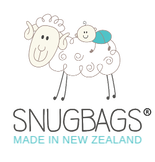|
Allergies including asthma and eczema are increasing at an alarming rate in developed countries like New Zealand. In fact we have the second highest prevalence of asthma in the world (after the UK) with one in four kids experiencing asthma symptoms. One of the reasons for this increase is believed to be our fear of germs and obsession with cleanliness, which means our babies and young children aren’t being exposed to the numbers of bugs and germs necessary to help them develop healthy, strong immune systems.
Below you’ll see a quick list of ideas for helping you make your home a healthier place for your baby, we’d love to hear if you have anything else to add. Tips for creating a healthier home for your baby Indoor air Potential asthma triggers in the air include cigarette smoke, fly sprays, air fresheners, strong perfumes and aerosol cleaning sprays. Some building materials, furniture and carpets also give off fumes that might make asthma worse. It’s best to clean your home with the windows open wherever possible and preferably with your baby in another room. If you have an older child that wants to ‘help’ with the cleaning then give them water and a cloth rather than exposing them unnecessarily to potentially harmful chemicals in cleaning products. VOCs It pays to be extremely careful of the fumes which come from fresh paint or new carpet. Low VOC (volatile organic compounds) paint is available, in fact most paint companies now offer an ‘eco’ range. New carpets can release powerful toxic fumes from any adhesives or latex backing. The best alternatives are pure wool carpet, sisal flooring if the budget allows or polished wooden floors with rugs for warmth. In the laundry Use laundry products that are free of enzymes, optical whiteners and synthetic perfume. These can leave potentially harmful residues in baby’s bed linen and clothing which is up against their skin 24/7. If they become damp, as babies’ linens often do, the moisture can reactivate residual chemicals and potentially cause irritation. New baby clothes and linen If possible buy organic fabrics or clothing that is dyed with eco-friendly and child safe dyes (certified by GOTS for example). If that is not an option - always wash first with a gentle liquid detergent. New linen is often dressed with toxic chemicals. During the processing of conventional cotton into clothing, toxic chemicals may be added at each stage: silicone waxes, harsh petroleum scours, softeners, heavy metals, flame and soil retardants, ammonia, and formaldehyde to name a few. In the kitchen Bisphenol-A (BPA) can be found in baby bottles as well as in the lining of aluminium cans of food and drinks. Studies have shown that BPA disrupts hormones in animals, leading to early sexual maturity, changes in development and reduction in sperm in the affected organism’s offspring. Use glass or stainless steel wherever practical or look for plastics that are labelled ‘BPA Free’. In the bathroom Sodium Lauryl Sulphate (SLS) is a widely used cleaning agent found in detergents and body care products. It’s a strong detergent for removing stains and it is also used to create foam, so is often used in children’s bubble bath. SLS can be absorbed through the skin and penetrate systemic tissues such as the brain, heart, spleen and liver. Check product labels and avoid this ingredient and its close cousin Sodium Laureth Sulphate (SLES) Washing your hands with antibacterial soap New parents change a lot of nappies and are forever in the bathroom washing their hands. It might seem like the right thing to use an anti-bacterial hand wash or soap, yet antibacterial soaps have been proven to have no better cleaning properties than normal soap, and are often loaded with nasty chemical ingredients like Triclosan that strip your skin of its natural protective oils, and can aggravate the skin, leaving it red and itchy. Non plastic toys Plastic toys can be made of polyvinyl chloride, a type of plastic that’s made with phthalates. The US Environmental Protection Agency (EPA) has raised concerns about phthalates because of their toxicity, the cumulative effects of exposure to multiple chemicals in this family of chemicals, and evidence that human and environmental exposure to these chemicals is pervasive. Look for toys that are non toxic and PVC free such as wood. Soft toys can be placed in the freezer overnight – the cold will kill any germs and dust that may be present making the toys safer to play with or chew on. Lead-based paint Any house built before 1980, was probably painted with lead-based paint. When it’s removed there are risks of absorbing the lead through contact with skin, or from the atmosphere through sanding dust or flakes. To remove lead-based paint, take precautions by keeping your children and pets well away.
0 Comments
Your comment will be posted after it is approved.
Leave a Reply. |
Author
Kim is the owner of SNUGBAGS - Merino for Kids. Together with her partner James and their little girl Neeva Rose, she lives in a little beach town called Piha on the West Coast in New Zealand. They love surfing, building sandcastles and all things natural and organic. Categories
All
Archives
October 2021
|
|
Online shopping with us
> Shipping > Guarantee & Returns > Product Videos > SNUGBAG selector tool > Privacy policy > Farm to SNUGBAGS |
Our Products
> Our Merino > Our Organic Cotton > FAQ > Washing & Care > Pediatrician Endorsed > Intellectual Property |
Customer Service
NZ: 0272 761175 Int: +64 272 761175 [email protected] > Contact Us > Our Journal > Become a VIP! |
© copyright 2022 SNUGBAGS


 RSS Feed
RSS Feed
